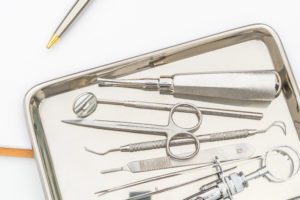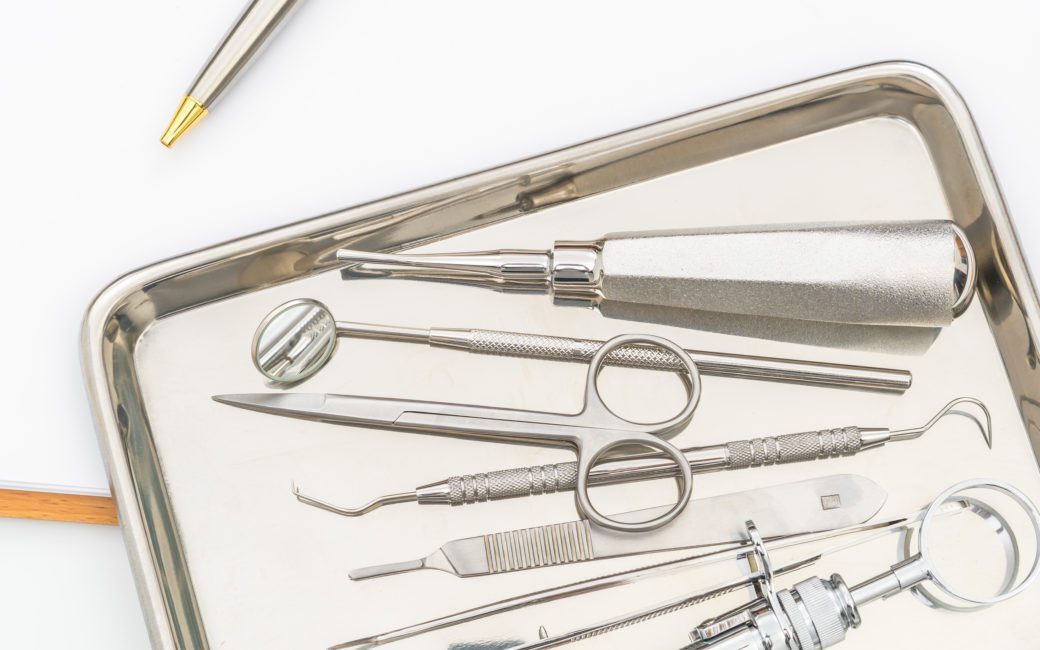 As early as 7,000 B.C., evidence of the existence of dentistry was found with the Indus Valley Civilization, which grew in the basins of the Indus River during the Bronze Age.
As early as 7,000 B.C., evidence of the existence of dentistry was found with the Indus Valley Civilization, which grew in the basins of the Indus River during the Bronze Age.
View History of Dentistry Infographic
Teeth from Indus Valley Civilization site Mehrgarh show signs of drilling. This suggests that people, particularly bead artisans, could cure a toothache with drills made from flint heads as early as 9,000 years ago.
A 6,500-year-old human mandible from Slovenia also presents traces of dental fillings with beeswax.
According to research published in scientific journal PLOS ONE by the California-based organization Public Library of Science, the exposed dentin (a result of occlusal wear) and the upper part of a vertical crack affecting the enamel and dentin tissues were filled with beeswax. Thus, this provides the earliest known evidence of therapeutic-palliative dental fillings.
The descriptions relating to dentistry and tooth decay from 5,000 B.C. are also present. A Sumerian text found on clay, “Legend of the Worm,” described the source of tooth decay and ache. They thought blood-drinking tooth worms would eat at the bone of the teeth.
The “Legend of the Worm” was also within the writings of Greek poet Homer and promoted by French physician and surgeon Guy de Chauliac.
2,600 B.C. marked the death of Hesy-Re, a high court official in Egypt and often considered the “first dentist.”
Auguste Mariette and Jacques de Morgan discovered and initially excavated the mastaba of Hesy-Re in 1861.
But it was British Egyptologist James Edward Quibell who undertook the main excavation works between 1910 and 1912.
One of the panels discovered in Hesy-Re’s tomb indicated “Chief of Dentists and Physicians.” These are the earliest titles relating to both dental surgery and medicine.
Recipes for the treatment of dental problems like toothaches, infections, and loose teeth spread through ancient Egyptian medical papyrus. Some are present within the Ebers Papyrus, Brugsch Papyrus, Kahun Papyri, and Hearst Papyrus.
Another ancient Egyptian medical text believed to reflect previous manuscripts of early 3000 B.C. called the Edwin Smith Papyrus discussed treatment for jaw fracture and dislocation.
In ancient Mesopotamia’s Code of Hammurabi dating back to about 1754 B.C., punishment relating to dental extraction can be found.
The period between 500 B.C. to 300 B.C. saw Greek physician Hippocrates and Greek philosopher and scientist Aristotle write about the eruption pattern of teeth. They also wrote about the treatment of tooth decay and gum disease, tooth extraction using forceps, and the use of wires to stabilize loose teeth and jaws with fractures.
Aside from Hippocrates and Aristotle, Roman encyclopaedist Aulus Cornelius Celsus also wrote extensively on oral hygiene and loose teeth stabilization. Additionally, they wrote about treatments for teething pain, toothache, and fractures of the jaw in his medical treatise De Medicina around 100 B.C.
In 166 to 201 A.D., the wealthy and powerful civilization in ancient Italy, the Etruscans, would use dental prosthetics using gold crowns and permanent bridgework.
By the Middle Ages, dentistry begins to gain its ground as an important practice separate from general medicine.
In 1210, a Guild of Barbers was established in France. Barbers evolved into two groups: surgeons and lay barbers.
Before this, monks in the early Middle Ages would serve as dentists. But by the early 12th century, the Church began to prohibit clergies from performing surgeries.
In place of monks, barbers began performing surgeries like teeth extraction. However, 1400 saw royal decrees in France prohibiting lay barbers from practicing surgical procedures other than bleeding, cupping, leeching, and teeth extraction.
In 1530, the first book wholly devoted to dentistry was published in Germany. Titled The Little Medicinal Book for All Kinds of Diseases and Infirmities of the Teeth (Artzney Buchlein), covered topics such as oral hygiene, tooth extraction, teeth drilling, and placement of gold fillings.
Artzney Buchlein was then followed by France’s Father of Surgery Ambrose Pare’s work, Complete Works. In this book included practical information on dentistry.
The 18th century saw dentistry developing as a profession beginning with Pierre Fauchard, the Father of Modern Dentistry. The release of Frauchard’s 1723 book The Surgeon Dentist makes it clear that around his time, dentistry began to expand.
His book was the first text to describe a comprehensive system of dentistry, including basic oral anatomy and function. Additionally, it would describe operative and restorative techniques as well as denture construction.
Fauchard’s contribution resulted in the expansion of the study of Dentistry.
In 1746, Claude Mouton described gold crowns and posts retained in root canals. Also, he recommended white enameling for gold crowns for a more pleasing appearance.
Other than Fauchard and Moton, John Hunter would also contribute to the study of dentistry. In fact, in the publication of the book, The Natural History of Human Teeth, he gave a scientific basis to dental anatomy.
Before the end of the 18th century, the first modern toothbrush was manufactured by English entrepreneur William Addis in 1780.
English Goldsmith and dental manufacturer Claudius Ash applied his craftsmanship to dentures. This propelled the foundation of Britain’s foremost manufacturer of dentures and dental appliances.
In 1831, James Snell came up with the first dental chair which featured a reclining seat.
By the 19th century, significant advances in dentistry have taken place.
The growth of dentistry prompted the Government to pass regulations like the Dentist Act of 1878 in the United Kingdom. Additionally, 1859 marked the establishment of the American Dental Association.
Aside from laws, dental schools also came about. The Baltimore College of Dental Surgery, the first dental college, was the first dental college.
The 1880s saw the mass production of tube toothpaste.
In 1896, New Orleans dentist C. Edmond Kells took the first dental X-ray of an individual in the United States.
The year 1899 included new knowledge in dentistry with the classification of the various forms of malocclusion by Edward Hartley Angle. We also credit Angle today for making orthodontics a dental specialty.
In 1900, Angle established Angle School of Orthodontia in St. Louis, the first school of orthodontics. Aside from Angle School, he also founded the first orthodontic society in 1901 and the first dental specialty journal in 1907.
The 20th century was an era of innovations in techniques and technology in dentistry. This started with Charles Land’s porcelain jacket crown, Alfred Einhorn’s local anesthetic procaine in 1905, and William Taggart’s “lost wax” casting machine for an increase in precision in cast fillings in 1907.
Leading educator of American Dentistry, Green Vardiman Black published his two-volume treatise Operative Dentistry in 1908. This book would remain the essential clinical dental text for 50 years.
In 1938, the first nylon toothbrush made with synthetic bristles appeared on the market. And in 1950, the first fluoride toothpaste entered the market as well.
The first commercial electric toothbrush began its production in 1960 in Switzerland.
Since then, more developments in the study of dentistry took place.
Also, techniques and technologies on the practice continue to advance and cater to the dental needs of the people by the constant improvements in dentistry.


